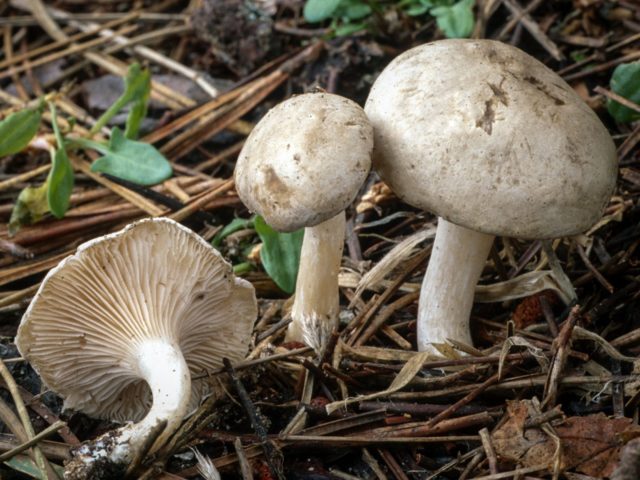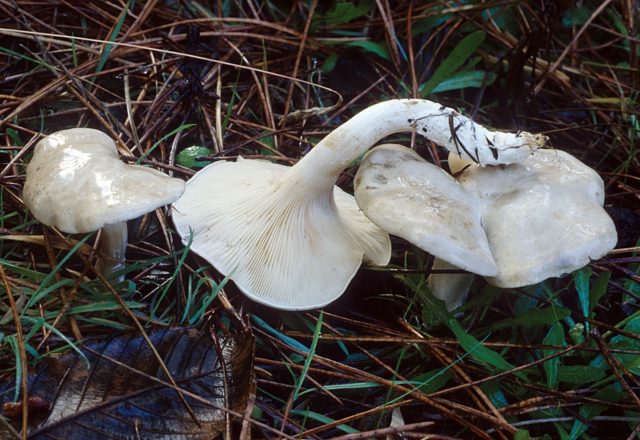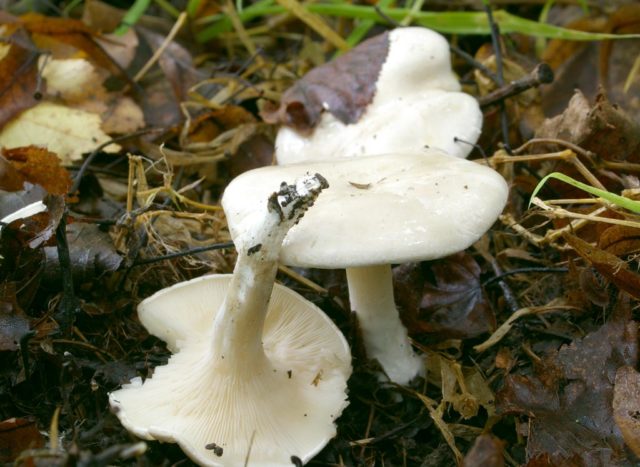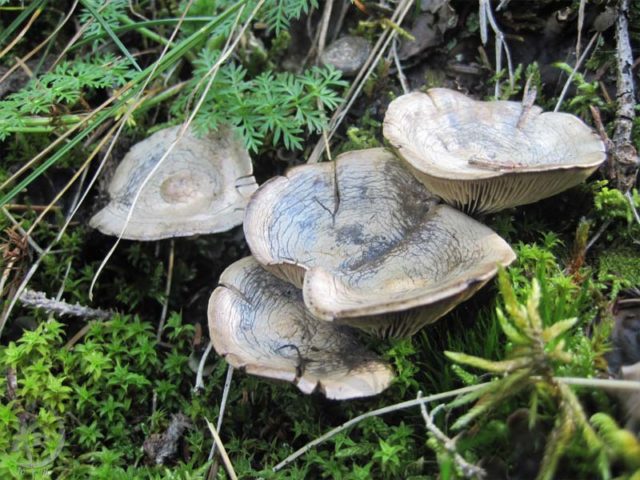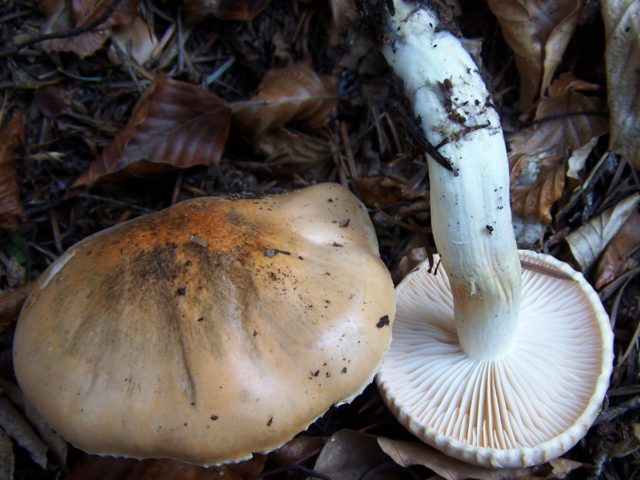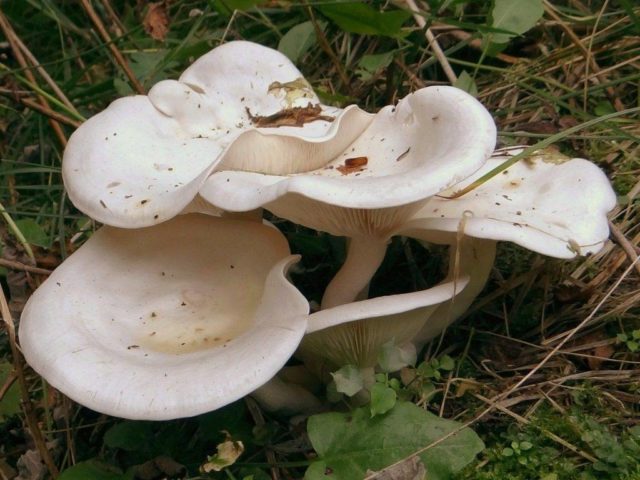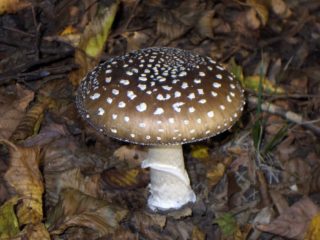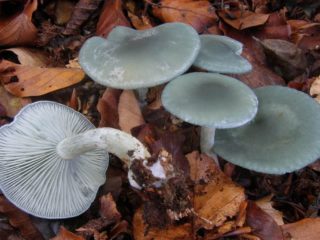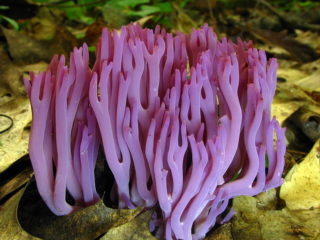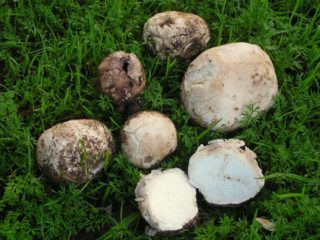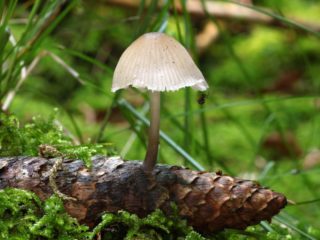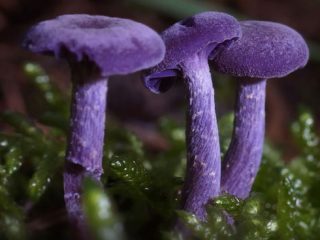Content
The cherry mushroom (lat. Clitopilus prunulus) is a representative of the lamellar group. In some publications it is called clitopilus vulgaris; you can also find other names: cherry tree, cherry tree. This is a cap mushroom, similar in appearance to a chanterelle, but is little known to lovers of quiet hunting and is frightening due to its similarity to poisonous specimens.
What does a mushroom look like?
According to the description, the cherry mushroom (shown in the photo) is white in color and has a powdery smell. The characteristic aroma is explained by the presence of the aldehyde trans-2-nonenal in the tissues.Due to the fact that there are many related species, classification is difficult.
Description of the cap
The cap of the hanging mushroom (pictured) has the following characteristics:
- diameter 4-10 cm;
- smooth, dry surface, in humid weather it becomes slightly sticky and shiny;
- the shape resembles a regular circle;
- convex in young people, flat in old ones. Often forms a funnel, which resembles chanterelles;
- young specimens are characterized by strongly rolled edges; for old specimens this feature is less pronounced;
- the color can be different shades of white, it all depends on the location and growing conditions;
- zonal rings are absent;
- the pulp is elastic and fleshy, does not change color when cut, but darkens after pressing.
The spore-bearing layer is presented in the form of thin and dense plates, acquiring a pink tint during the ripening period, and also as it ages.
Description of the leg
You can distinguish the hanging mushroom from its other species, which are not always edible, by the stem (pictured). Its color is the same as the hat. It can be curved, the length ranges from 3 to 9 cm. General characteristics:
- the shape of the leg is cylindrical, flat at the base, and slightly expanded closer to the cap;
- spore-bearing plates descend onto the stalk of the cherry tree;
- the pulp is dense;
- the surface is velvety, delicate;
- young specimens have pubescence.
Where and how does it grow
Based on the name, cherry blossom (cherry tree) is found in the area where pink flowers grow: cherry, plum, pear and apple trees. These are the best guidelines when searching for them. Cherry blossom grows well next to light broad-leaved trees (oak, beech).
Cherry blossoms grow in vegetable gardens, orchards, and are found in meadows.It can form small groups, but single specimens are often found. The collection period lasts from mid-July and ends in October. The cherry blossom disappears with the onset of the first cold snap.
Clitopilus prunulus grows in acidic or acidified soils. If the soil is neutral or alkaline, then it is almost impossible to find honeydew.
The growing zone is the entire European temperate zone.
They have learned to grow cherries artificially on tree trunks or on special farms (for sale). In shopping centers they are called oyster mushrooms. They differ from real pendants in the light color of their caps.
Edible mushroom or not
Cherry mushrooms are used as food:
- fresh after boiling;
- for preparing second courses (stewing);
- as a filling for baked goods;
- for preparing sauces and aromatic seasonings;
- for drying, pickling and marinating.
Cherry is considered a delicacy in Europe. It is rich in phosphorus compounds (up to 45%), which are necessary for the human body.
The harvested crop is dried. Before use, mushrooms are soaked for an hour. Cherry has a pleasant taste and serves as a good addition to dishes.
Extracts of this mushroom are used in medicine as an anticoagulant. Recommended for people with increased blood clotting and those who suffer from thrombosis.
Doubles and their differences
The differences between all relatives of the cherry tree are slight, so they are very difficult to notice when picking mushrooms. Poisonous counterparts that pose a serious health hazard:
Bitter sulphur
The pulp is very bitter (as the name suggests), and there are concentric cracks on the cap.Poisonous and life threatening.
Entoloma poisonous
The mushroom is poisonous. It differs from cherry in the arrangement of plates on the stem. In Entoloma they are much higher.
Waxy talker
The only difference: there are no zonal rings, which is especially noticeable at high humidity. Some sources point to the pink tint of the plates as a sign of a poisonous mushroom, but this sign is not always correct.
The differences are quite vague, which should serve as a warning to inexperienced mushroom pickers. Careful study of the photo and description of the cherry mushroom will help you avoid poisoning.
Conclusion
Cherry mushroom is collected in environmentally safe places. The quiet hunting area should not be located near highways or enterprises. Only young specimens that have not yet accumulated toxins should be collected. Carefully inspect the plates, stem and cap of the mushroom. This will prevent poisonous look-alikes from entering the basket.
